Report Details
Not found what are you looking for

Automobile and Transportation
Impact COVID-19 on Automotive Fuel Cell Market : Segmented; By Electrolyte Type (PEMFC, PAFC, AFC, and MFC), By Vehicle type (Passenger Vehicle and Commercial Vehicle), By Component (Fuel Processor, Power Conditioner, Fuel Stack and Other), And Region – Global Analysis of Market Size, Share & Trends For 2019–2020 And Forecasts To 2031
Description
ToC
Tables & Figures
Companies
Speak with Analyst
[ 176 + Pages Research Report ] Impact COVID-19 on Automotive Fuel Cell Market to surpass the value at 2.1 billion in 2021 at a CAGR of 47.4%.
Product Overview
In power automobiles, fuel cells are used, which are propelled by H2 fuel. This sort of fuel is stored in a high-pressure tank and then supplied in a fuel cell stack, wherein oxygen and hydrogen from the air react to generate electricity. Unlike typical fuel cell vehicles, which usually run-on diesel/gasoline, fuel cell vehicles generate electricity using a combination of hydrogen and oxygen. For its operation, fuel cells typically consume oxygen from the atmosphere & compressed hydrogen. Because most fuel cells emit only water and heat, they are designated as zero-emission vehicles. For automakers, automotive technology is an appealing offer since it allows them to produce high-energy cells capable of powering vehicles.
Market Highlights
Global Automotive Fuel Cell market is expected to project a notable CAGR of 47.4% in 2031.
The worldwide Automotive Fuel Cell industry is predicted to grow due to factors such as government backing and policies, as well as increased consumer awareness. Furthermore, the Automotive Fuel Cell Market is being driven by new developments in fuel cell technology as well as tight emission regulations.
Global Automotive Fuel Cell: Segments
PEMFC segment to grow with the highest CAGR during 2021-31
The global market is segmented based on electrolyte type into Proton Exchange Membrane Fuel Cell (PEMFC), Phosphoric Acid Fuel Cell (PAFC), Alkaline Fuel Cell (AFC), and Microbial Fuel Cell (MFC). The Proton Exchange MFC accounted for the majority of fuel cell technical advancements. Market expansion is being driven by rising demand for renewable energy generation & reliance on fuel cell-based public transport systems in developed nations. Furthermore, PEMFC's features, such as higher efficiency, low operating costs, quick maintenance, and improved dependability and operability, are expected to increase demand for the technology during the projection period.
Passenger Vehicles segment to grow with the highest CAGR during 2021-31
Based on Vehicle Type, the market is segmented into Passenger Vehicles, and Light Commercial vehicles (LCV). With an increasing adoption rate, rising amount of personal mobility, and multiple emission rules implemented by various governments, the passenger car sub-segment currently dominates the market. Furthermore, many customers and governments are choosing clean and low-emission vehicles, which has increased demand for the fuel cell-based passenger car segment. However, many governments are embracing fuel cell buses to minimize carbon emissions, and the Buses are likely to grow shortly as a result.
Market Dynamics
Drivers
Rising Fuel Cell Vehicle Demand in Automotive & Transportation
Fuel-cell vehicles provide a long driving range, quick refilling, quiet operation, and no greenhouse gas or air pollution emissions. As a result, fuel cells are well suited to transportation & automotive applications. Fuel cells are a scalable and versatile source of electricity that can be used in a wide range of transportation applications, including material handling vehicles, busses, trains, autos, defense vehicles, and light commercial vehicles (LCVs). In advertising applications, fuel cells are additionally used as stationary fuel sources. Fuel cells can be used as a major source of energy, a backup source of energy, and a source of heat and energy in combined heat and power systems. Furthermore, governments are taking steps to promote the use of fuel cells for transport, which could help the transportation and automotive segments of the fuel cell market grow even faster.
Increase R&D efforts and Investment
The majority of global R&D efforts are concentrated on the development and advancement of fuel cell-powered cars, which is likely to open up new market prospects. However, research and development activities relating to utilities & UAVs for the defense sector, as well as portable power production units, have expanded significantly in recent years. The increased attention of governments throughout the world on the use of sustainable energy sources has increased overall investments in fuel cell-based electricity generation. Result of which, the increased investment improves the future and current growth of the innovation in the fuel cells market.
Restraint
High cost of hydrogen fuel station
In comparison to petroleum, diesel, as well as other fuels, the cost of establishing a hydrogen fuel station & supporting infrastructure is extremely high. The development of hydrogen fueling infrastructures around the world has been hampered as a result of this. This is because hydrogen is a highly flammable fuel, which necessitates expensive equipment as well as appropriate safeguards and safety measures. As a result, car costs rise, putting a damper on the global adoption of automotive fuel cell vehicles.
Global Automotive Fuel Cell: Key Players
Ballard Power Systems
Company Overview, Business Strategy, Key Product Offerings, Financial Performance, Key Performance Indicators, Risk Analysis, Recent Development, Regional Presence, SWOT Analysis
ITM Power
AFCC
BorgWarner Inc.
Toyota Motor Corporation
Hyundai Motor Company
Nissan Motor Corporation
Honda Motor Company Inc.
Toshiba
Proton Motor Fuel Cell GmbH
Other Prominent Players
Global Automotive Fuel Cell: Regions
Global Automotive Fuel Cell market is segmented based on regional analysis into five major regions: North America, Latin America, Europe, Asia Pacific, and the Middle East and Africa. The North American area has the highest market share and is expected to grow at the fastest rate in the future years. The tremendous demand for cars associated with fuel cells increased R&D, and innovations coming to market are the reasons why North America is the largest market. The United States and Canada both have the most hydrogen fuel outlets and are home to the world's top fuel cell manufacturers. Even though demand for vehicle gasoline is predicted to rise in nearly every region.
Impact of Covid-19 on Automotive Fuel Cell Market
The impact of the pandemic on supply chains will influence hydrogen-based technologies, which require a well-coordinated supply chain and a large amount of cash to demonstrate. The COVID-19 epidemic has impacted the current hydrogen consumption of oil refining, steel production, and the chemicals sector, according to the IEA. According to the International Energy Agency, gasoline consumption demand for critical hydrogen-based chemicals (such as methanol) would fall due to pandemics. Sales of hydrogen-based transportation fuels increased in the forecast period. Overall, the global epidemic has had a significant influence on the fuel cell sector.
Global Automotive Fuel Cell is further segmented by region into:
North America Market Size, Share, Trends, Opportunities, Y-o-Y Growth, CAGR – the United States and Canada
Latin America Market Size, Share, Trends, Opportunities, Y-o-Y Growth, CAGR – Mexico, Argentina, Brazil and Rest of Latin America
Europe Market Size, Share, Trends, Opportunities, Y-o-Y Growth, CAGR – United Kingdom, France, Germany, Italy, Spain, Belgium, Hungary, Luxembourg, Netherlands, Poland, NORDIC, Russia, Turkey and Rest of Europe
Asia Pacific Market Size, Share, Trends, Opportunities, Y-o-Y Growth, CAGR – India, China, South Korea, Japan, Malaysia, Indonesia, New Zealand, Australia, and Rest of APAC
the Middle East and Africa Market Size, Share, Trends, Opportunities, Y-o-Y Growth, CAGR – North Africa, Israel, GCC, South Africa and Rest of MENA
Global Automotive Fuel Cell report also contains analysis on:
Automotive Fuel Cell Segments:
By Electrolyte Type
PEMFC
PAFC
AFC
MFC
By Vehicle type
Passenger Vehicle
Hatchback
Sedan
Utility Vehicles
Commercial Vehicle
Light Commercial Vehicle
Heavy Commercial Vehicle
By Component
Fuel Processor
Power Conditioner
Fuel Stack
Other
Automotive Fuel Cell Dynamics
Automotive Fuel Cell Size
Supply & Demand
Current Trends/Issues/Challenges
Competition & Companies Involved in the Market
Value Chain of the Market
Market Drivers and Restraints
Automotive Fuel Cell Market Report Scope and Segmentation
Report Attribute Details
The market size value in 2021 2.1 billion
The revenue forecast in 2031 99.6 billion
Growth Rate CAGR of 47.4% from 2021 to 2031
The base year for estimation 2020
Quantitative units Revenue in USD million and CAGR from 2021 to 2031
Report coverage Revenue forecast, company ranking, competitive landscape, growth factors, and trends
Segments covered Electrolyte Type, Vehicle Type, Component Application, and Region
Regional scope North America, Europe, Asia Pacific, Latin America, Middle East & Africa (MEA)
Key companies profiled Ballard Power Systems, ITM Power, AFCC, BorgWarner Inc., Toyota Motor Corporation, Hyundai Motor Company, Nissan Motor Corporation, Honda Motor Company Inc., Toshiba, Proton Motor Fuel Cell GmbH, and Other Prominent Players.
FAQ
- You should buy this report from Xcellent Insights for a better clarity on market scenarios.
- The market report has been prepared using a pragmatic approach to suit your needs.
- We have an extensive library of reports that can help you understand the market landscape and make informed decisions about your business.
- Additionally, the reports are written by experienced analysts who have a deep understanding of the market and the latest trends.
- Besides, customization is a value-added service if you decide to opt.
Table of Content
Contents
1. Executive Summary
2. Global Automotive Fuel Cell Market
2.1. Product Overview
2.2. Market Definition
2.3. Segmentation
2.4. Assumptions and Acronyms
3. Research Methodology
3.1. Research Objectives
3.2. Primary Research
3.3. Secondary Research
3.4. Forecast Model
3.5. Market Size Estimation
4. Average Pricing Analysis
5. Macro-Economic Indicators
6. Market Dynamics
6.1. Growth Drivers
6.2. Restraints
6.3. Opportunity
6.4. Trends
7. Correlation & Regression Analysis
7.1. Correlation Matrix
7.2. Regression Matrix
8. Recent Development, Policies & Regulatory Landscape
9. Risk Analysis
9.1. Demand Risk Analysis
9.2. Supply Risk Analysis
10. Global Automotive Fuel Cell Market Analysis
10.1. Porters Five Forces
10.1.1. Threat of New Entrants
10.1.2. Bargaining Power of Suppliers
10.1.3. Threat of Substitutes
10.1.4. Rivalry
10.2. PEST Analysis
10.2.1. Political
10.2.2. Economic
10.2.3. Social
10.2.4. Technological
11. Global Automotive Fuel Cell Market
11.1. Market Size & forecast, 2020A-2031F
11.1.1. By Value (USD Million) 2020-2031F; Y-o-Y Growth (%) 2021-2031F
11.1.2. By Volume (Million Units) 2020-2031F; Y-o-Y Growth (%) 2021-2031F
12. Global Automotive Fuel Cell Market: Market Segmentation
12.1. By Regions
12.1.1. North America:(U.S. and Canada), By Value (USD Million) 2020-2031F; Y-o-Y Growth (%) 2021-2031F
12.1.2. Latin America: (Brazil, Mexico, Argentina, Rest of Latin America), By Value (USD Million) 2020-2031F; Y-o-Y Growth (%) 2021-2031F
12.1.3. Europe: (Germany, UK, France, Italy, Spain, BENELUX, NORDIC, Hungary, Poland, Turkey, Russia, Rest of Europe), By Value (USD Million) 2020-2031F; Y-o-Y Growth (%) 2021-2031F
12.1.4. Asia-Pacific: (China, India, Japan, South Korea, Indonesia, Malaysia, Australia, New Zealand, Rest of Asia Pacific), By Value (USD Million) 2020-2031F; Y-o-Y Growth (%) 2021-2031F
12.1.5. Middle East and Africa: (Israel, GCC, North Africa, South Africa, Rest of Middle East and Africa), By Value (USD Million) 2020-2031F; Y-o-Y Growth (%) 2021-2031F
12.2. By Electrolyte Type: Market Share (2020-2031F)
12.2.1. PEMFC, By Value (USD Million) 2020-2031F; Y-o-Y Growth (%) 2021-2031F
12.2.2. PAFC, By Value (USD Million) 2020-2031F; Y-o-Y Growth (%) 2021-2031F
12.2.3. MFC, By Value (USD Million) 2020-2031F; Y-o-Y Growth (%) 2021-2031F
12.2.4. AFC, By Value (USD Million) 2020-2031F; Y-o-Y Growth (%) 2021-2031F
12.3. By Vehicle Type: Market Share (2020-2031F)
12.3.1. Passenger Vehicle, By Value (USD Million) 2020-2031F; Y-o-Y Growth (%) 2021-2031F
12.3.2. Commercial Vehicle, By Value (USD Million) 2020-2031F; Y-o-Y Growth (%) 2021-2031F
12.4. By Component: Market Share (2020-2031F)
12.4.1. Fuel Processor, By Value (USD Million) 2020-2031F; Y-o-Y Growth (%) 2021-2031F
12.4.2. Power Conditioner, By Value (USD Million) 2020-2031F; Y-o-Y Growth (%) 2021-2031F
12.4.3. Fuel Stack, By Value (USD Million) 2020-2031F; Y-o-Y Growth (%) 2021-2031F
12.4.4. Others, By Value (USD Million) 2020-2031F; Y-o-Y Growth (%) 2021-2031F
13. Company Profile
13.1. Ballard Power Systems
13.1.1. Company Overview
13.1.2. Company Total Revenue (Financials)
13.1.3. Market Potential
13.1.4. Global Presence
13.1.5. Key Performance Indicators
13.1.6. SWOT Analysis
13.1.7. Product Launch
13.2. ITM Power
13.3. AFCC
13.4. BorgWarner Inc.
13.5. Toyota Motor Corporation
13.6. Hyundai Motor Company
13.7. Nissan Motor Corporation
13.8. Honda Motor Company Inc.
13.9. Toshiba
13.10. Proton Motor Fuel Cell GmbH
13.11. Other Prominent Players
14. Consultant Recommendation
**The above given segmentations and companies could be subjected to further modification based on in-depth feasibility studies conducted for the final deliverable.
Tables and Figures
Contact our Sales Team for List of Tables & Figures.
Key Players
Ballard Power Systems
Company Overview, Business Strategy, Key Product Offerings, Financial Performance, Key Performance Indicators, Risk Analysis, Recent Development, Regional Presence, SWOT Analysis
ITM Power
AFCC
BorgWarner Inc.
Toyota Motor Corporation
Hyundai Motor Company
Nissan Motor Corporation
Honda Motor Company Inc.
Toshiba
Proton Motor Fuel Cell GmbH
Other Prominent Player
Why Choose Us
- Extensive Library of Reports.
- Identify the clients' needs.
- Pragmatic Research Approach.
- Clarity on Market Scenarios.
- Tailor-Made Solutions.
- Expert Analysts Team.
- Competitive and Fair Prices.
Clientele
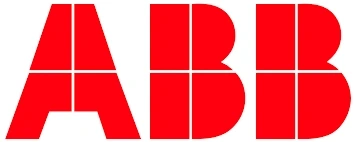
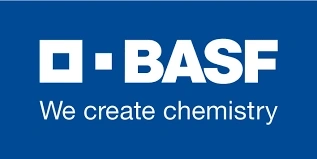
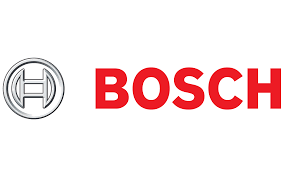
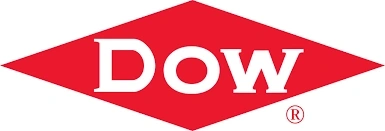
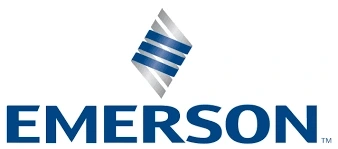

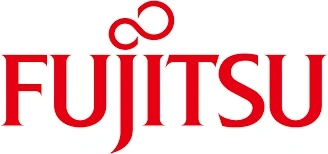
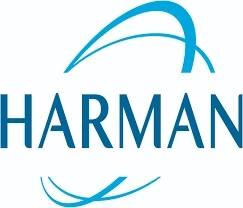
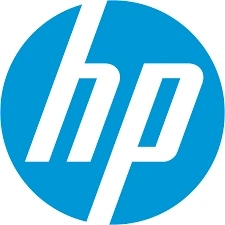

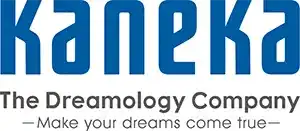
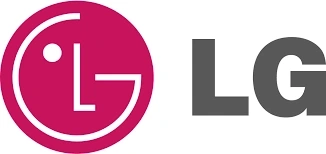

Thank you
Xcellent Insights has received your query!